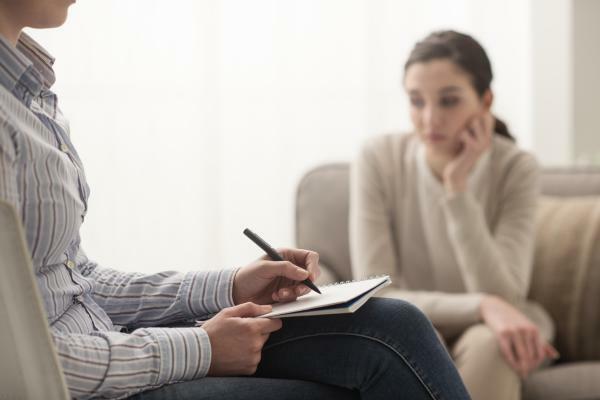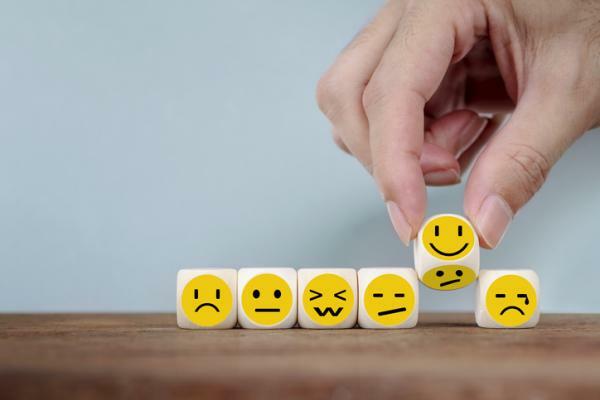
Depending on our personality traits, it is normal that we more or less like being around people. However, there are people who would like to be accompanied, but great anguish prevents it. This is the case of people with social phobia or social anxiety. It is one of the most common psychological disorders, with a prevalence that ranges between 3% and 13%.
We are social beings, we live in society and we need to relate to others. Both to satisfy our personal and work needs, we must interact with other people. Social phobia is a great discomfort for people who present it, it prevents them from developing their life normally and from being able to fulfill themselves. In addition, due to the anxiety, isolation and frustration it causes, it can lead to other disorders. Therefore, it is important to know the treatment with scientific evidence of social anxiety. In this Psychology-Online article, you will find what it is, the symptoms, the types, the causes and how to overcome social phobia.
Social phobia is, like all phobia, an anxiety disorder. Social phobia is defined as a
It is worth mentioning that we are social beings and we appreciate being well valued by others and being part of the group, so it is normal to take into account the reaction and perception of others. However, in social phobia, the concern is much higher than would be expected in relation to the situation. The anguish and discomfort felt by the person with social phobia are not justified by a real danger.

The symptoms that a person with social anxiety presents is the following:
- Avoidance of social situations. A person with social phobia will do everything possible to avoid the events that generate anxiety.
- Great discomfort. If you cannot escape the situation, you will experience it with great anguish and discomfort. The typical symptoms of anxiety are: tachycardia, feeling of suffocation, muscle tension, nausea, chills, dizziness, diarrhea, flushing, sweating, trembling, urgency to urinate or defecate..., which can come yet panic attack.
- Blocking. Anguish makes them unable to speak fluently.
- Impact on academic or work level. We speak of a disorder when the symptoms presented negatively and significantly affect the life of the person.
- Social impact. People with social phobia have great difficulties interacting, so it will be difficult for them to establish and maintain friendships. It will also be more difficult for them to meet new people and have a partner.
- Intent to go unnoticed. People with social phobia do not want to stand out, something that also affects their social and work life.
- Unsafety. The lack of security is the origin of the fear of being judged.
- Fear of rejection. Exaggerated fear of criticism by others.
- Catastrophic thinking about social situations. An irrational belief that contributes an extremely negative evaluation to situations of social interaction.
- Performance perception error. The person with social phobia considers her performance in social situations much worse than it really is.
- Anticipation. Anxiety does not appear only at the moment of the feared situation, but also when thinking about it.
This reaction occurs in situations such as having a conversation, attending a party, being in a group, calling telephone, speaking with strangers, conducting an interview, speaking or acting in public, exposing oneself, speaking with superior ...
Social phobia, like the rest of psychopathology, is evaluated through the general clinical interview, the diagnostic interview (such as the International Diagnostic Interview [CIDI] or Interview for Anxiety Disorders [ADIS-IV]), self-report measures, specific questionnaires of social phobia and self-records (in which the situation, thoughts, emotions, discomfort and behavior).
Within the specific questionnaires of social phobia, which we could call social phobia tests, we can find the Inventory of anxiety and social phobia (SPAI), the Liebowitz Social Anxiety Scale (LSAS), the Social phobia scale (SPIN), the Social anxiety questionnaire for adults (CASE-A30) or the Watson and Friend Social Anxiety Scale (SADS). Here you will find one online adaptation of this social phobia test so that you can clarify if you identify with the symptoms of social phobia.
The most studied and validated psychological treatment for social phobia is the Cognitive-behavioral therapy (TCC), although the Acceptance and commitment therapy (ACT) has also been shown to be effective for anxiety disorders. CBT defends that by changing behavior, we change thoughts and vice versa. For its part, the ACT proposes to accept the discomfort. In phobias, one of the main symptoms is avoidance and, precisely, ACT obtains especially good results with avoidant patients.
We are going to see various techniques and strategies to overcome social phobia from different psychological perspectives.
1. Group support
Due to the characteristics of this disorder, the efficacy of the treatment increases with group sessions. Groups are usually between 4 and 9 people. The group also serves to practice the social skills learned.
2. Psychoeducation
It explains what an anxiety disorder is and what social phobia is. The cognitive and behavioral factors that cause and maintain anxiety and how psychology approaches it so that it does not incapacitate are also exposed. Treatment techniques, procedures and objectives are explained. The objective is for the patient to understand that avoidance maintains the symptoms and to understand why it is so important to be exposed to situations.
It is also important to debunk some of the myths related to anxiety: anxiety is not dangerous, anxiety attack ends, anxiety is not a sign of weakness, anxiety is not "bad", sometimes it is adaptive.
3. Identification of automatic thoughts
What activates and increases the level of anxiety are the beliefs and thoughts about the situation, and not the situation itself. Therefore, it is vitally important to identify these automatic thoughts that go through your mind. To identify them, the person needs to pay attention to the internal dialogue and register the automatic thoughts that appear. Usually backed by irrational beliefs about the world, about others, or about himself or herself. For example, that he will never be able to express her opinion or that others will judge him. Irrational thoughts are illogical, unprovable, absolutistic, and produce disturbing emotions.
4. Cognitive restructuring
Once the automatic thoughts and the irrational beliefs that support them have been identified, they can be discussed and replaced by more rational and adaptive beliefs. Through debate and the application of logic and evidence, those beliefs are predicted to change. In this article, you can see the irrational ideas discussion technique. It is one of the best exercises to overcome social phobia.
5. Behavioral experiments
Reality tests and behavioral experiments can also be used, such as asking for the assessment of other people or videotaping a social interaction of the patient. Other ideas are to make a small mistake or to be explicitly exposed to verify that the consequences that have occurred do not correspond to the seriousness of the imagined consequences. In this way, the person can verify that the anticipations of him do not occur.
6. Acceptance of discomfort
The treatment of anxiety disorders, such as phobias, involves accepting the symptoms of anxiety. Accepting is about stopping fighting your anxiety symptoms. Anxiety is an activation mechanism of the organism that aims to put the body in the optimal conditions to face a danger (which can be real or imagined). Therefore, anxiety is a phenomenon that helps our survival. The problem is that when this information is not known and anxiety is not understood, it can generate a lot of fear because it is an unpleasant sensation. You need to accept anxiety symptoms, as well as accept discomfort and discomfort as part of life.
7. Relaxation techniques
There are many relaxation techniques and they serve to reduce the activation of the prasympathetic nervous system, responsible for physiological symptoms. They are techniques that must be learned and practiced regularly in order to have benefits. The most used are:
- The abdominal breathing, which consists of carrying out the movement of the breath with the diaphragm instead of with the thorax. It is learned by placing one hand on the chest and the other on the abdomen, inhaling slowly, bringing the air to the end of the lungs and noticing how the abdomen swells and not the chest. When you expire, you try to empty the air slowly, noticing how the abdomen deflates.
- The Jacobson's progressive muscle relaxation It consists of learning to relax the body through the exercise of tension relaxation. It is learned by tensing and releasing each area of the body, making these areas progressively larger, to finally be able to release and relax the whole body.
8. Social skills training
It is important to know all the elements that come into play in social interactions: the look, the facial expression, the smile, the body posture, orientation, gesticulation, distance, physical contact, intonation, volume, fluency, speed, words...
The main social skill, and that will allow to develop the others social skills, is assertiveness. Let's look at the 3 styles of communication:
- Aggressive styling: this communicative style is characterized by disrespect for the opinions and feelings of others. The person who practices aggressive communication does not take into account what the other person wants to express. A high tone of voice is observed, a rigid body posture is observed, the personal space of others is invaded, the gestures can be offensive ...
- Passive style: this communicative style is characterized by fear of conflict. The person who practices passive communication gives space to other people, so that they can express themselves, listen and understand, but they are not able to express their opinion. It is observed that the person keeps the distance, speaks little and with a low voice, does not gesture ...
- Assertive style: this communicative style is between the previous two and is characterized by respect for both parties. The person who practices assertive communication is able to express her thoughts and feelings, but also to listen to and respect those of the other person. The objective of assertive communication is to reach agreements and approach positions from respect and understanding. A friendly facial expression, a smile, a relaxed and confident body posture, a gentle gesture, a correct distance, an adequate volume, intonation and speed are observed ...
The objective of the training is to have an assertive behavior in social interaction.
9. Role-playing
These experiential exercises consist of representing social behaviors such as:
- Personal presentation.
- Start, maintain and end a conversation.
- Receive or pay compliments.
- Express an opinion or complaint.
- Make an agreement or negotiation.
The performances should be gradual, at first they can last only a few seconds and the goal is to reach several minutes. In addition, a good strategy is to record the performances to be able to visualize them and improve with the feedback received. Role-playing is one of the most important exercises to overcome social phobia.
10. Attention training (mindfulness meditation)
Another important strategy for anxiety management is attention training. The mindfulness meditation It is a training that will allow you to direct your attention to the present moment or to a specific stimulus.
11. Gradual live exposure
Exhibition tasks in real life.
- Interaction with strangers.
- Expression of annoyance, anger or displeasure.
- Be exposed or make a fool of yourself.
- Speaking or acting in public.
- Interact with people of authority.
12. Self-esteem and self-compassion work
Another important aspect to work on in cases of social phobia is self-esteem. Through self-image restructuring techniques, we can ensure that the person has a more realistic and healthy self-concept. In this article, we explain what is a healthy self-esteem.
On the other hand, it is also important to take care of the treatment towards oneself and that it is compassionate. Self-compassion is treating yourself in a friendly and caring way, both in actions and in language. In this article, we explain how to work self-compassion.
13. Drugs and natural remedies
To accompany psychotherapeutic treatment, it is sometimes necessary to resort to other treatments, both natural and pharmacological remedies. These work as a helpful tool to decrease the symptoms of anxiety, but they do not cure the disorder. In case of needing a pharmacological treatment, the psychiatrist will be the one who will prescribe it. Self-medication is something that should be avoided, since we do not control the effects that drugs have on our body.
The anxiolytics they are the main medications for anxiety symptoms. Among the best known anxiolytics, we highlight Lorazepam, Bromazepam and Diazepam.
Among the natural remedies for anxiety, we find the valerian. Valerian root is a well-known natural remedy to alleviate anxiety or nervous symptoms. This can be taken as a tea or from an extract. Valerian has relaxing and sedative effects that reduce the symptoms of social phobia, this helps us to better manage our emotions and, thus, try to improve skills social. In this article, you will find several Natural anxiolytics to calm anxiety.



